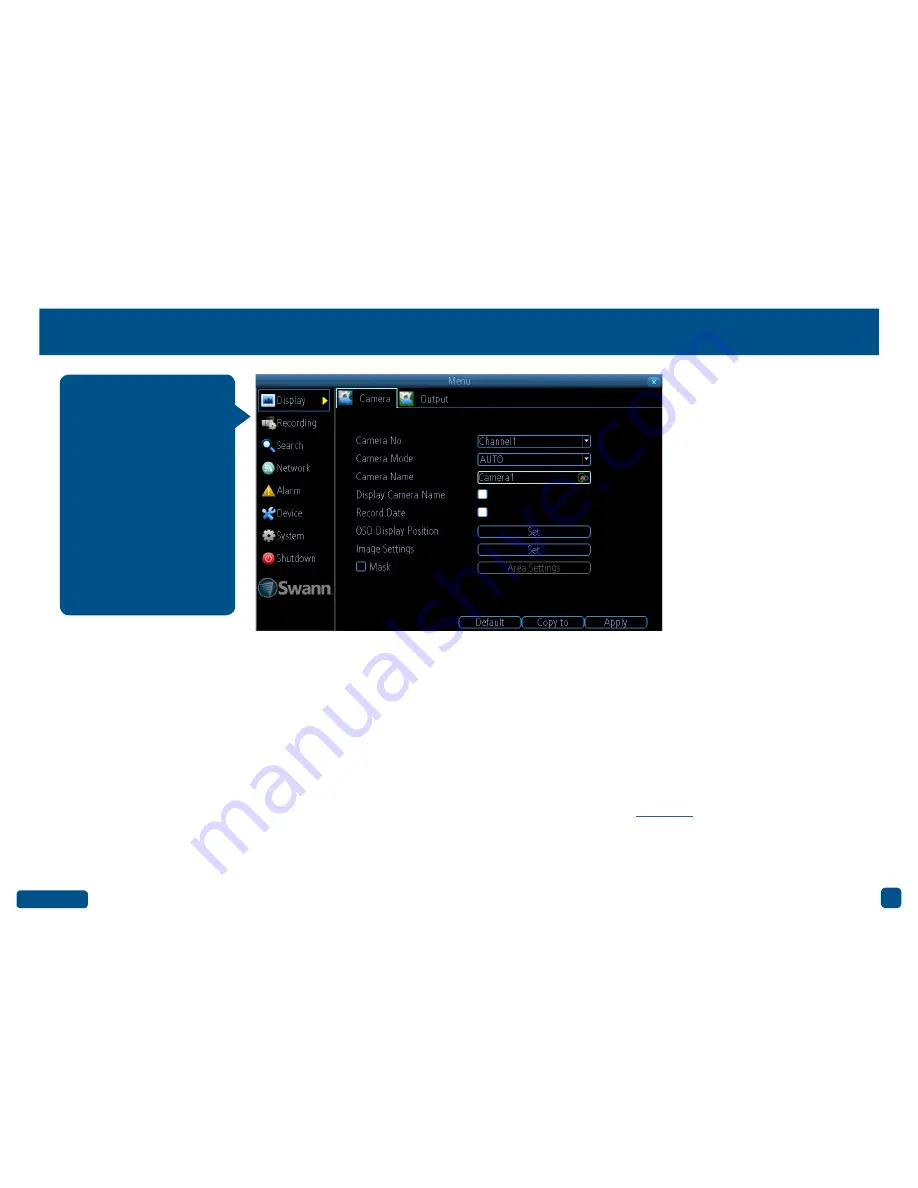
Back to top
9
Display: Camera
Camera No.:
Select a camera that you would like to configure.
Camera Mode:
Choose the type of camera from AUTO, TVI and AHD.
Camera Name:
Select a name for the camera you’ve selected. It can be
up to 16 characters in length.
Display Camera Name:
Leave this enabled if you would like to display
the camera name on the Live View screen, otherwise click to disable.
Record Date:
It’s recommended to leave this enabled as it creates an
inseparable record of exactly when the footage was captured.
OSD Display Position:
Click the “Set” button to change the position of
the camera name on the Live View screen. Use the mouse to reposition
the camera name. Right-click the mouse then click “Save” to exit.
Image Settings:
This gives you access to the image adjustment tools.
Click the “Set” button to change then click “OK” when finished.
Brightness:
This changes how light the image appears to be.
Contrast:
This increases the difference between the blackest black and
the whitest white in the image.
Saturation:
This alters how much colour is displayed in the image. The
higher the saturation, the more bright and vivid colours will appear.
Hue:
This changes the colour mix of the image.
Mask:
Click the checkbox to enable then click “Area Settings” to create
one or more privacy masks -
click here
for more information.
• Use the “Copy to” button to apply all settings to the other cameras.
• Don’t forget to click “Apply” to save settings.
• Right-click the mouse to exit the Menu.
The configuration options
available allow you to name
each camera relevant to
where it has been installed
as well as the ability to ad-
just image settings such
as brightness and contrast.
The Camera Mode option
sets the type of camera be-
tween AHD and TVI, AUTO
will set the DVR to match
the supported camera sig-
nal and is recommended.


























